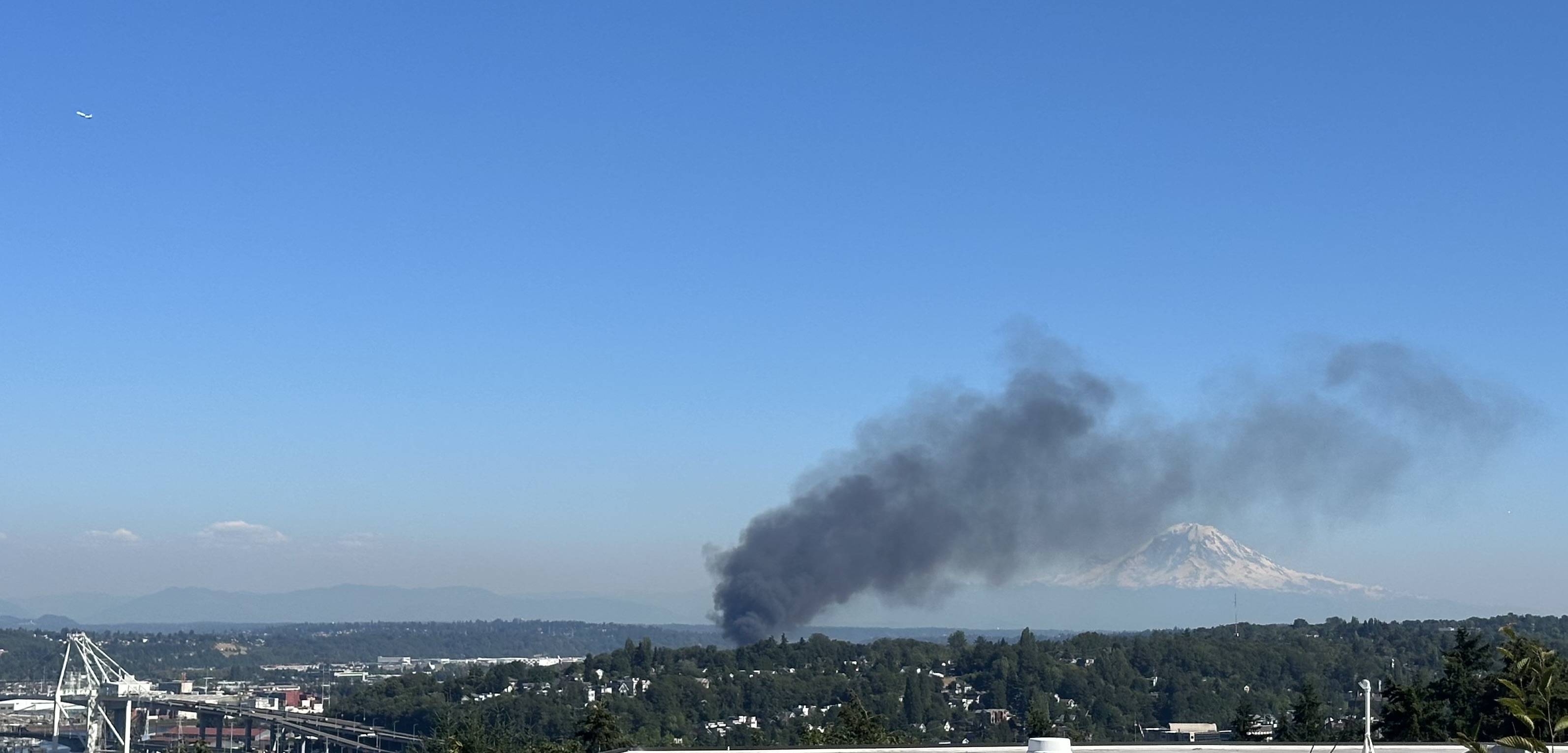By Tracy Record
West Seattle Blog editor
Two weeks and two days after the sudden safety shutdown of the West Seattle Bridge, its repair plan is still a work in progress.
That’s what we heard at the latest public briefing on the situation – more of a mini-briefing, with a small slot at the Move Seattle Levy Oversight Committee‘s monthly meeting Tuesday night. The committee’s members are volunteers appointed to keep watch on what’s done with the money raised by the levy, passed by voters in 2015, meant to raise $930 million over its nine years.
The briefing was led by deputy SDOT director Lorelei Williams, with roadway-structures director Matt Donahue and department director Sam Zimbabwe also participating.
Williams recapped what had preceded the March 23rd shutdown, saying that work done on the cracks last year made them more visible to passersby and describing it as not a structural repair, but done instead to prevent further deterioration. “Cracking in a concrete structure is not always a bad thing,” she said, adding that elevated concern is more about “how it cracks and where it cracks.” Hours after SDOT had released 14 inspection reports going back almost seven years, she said what others in the department had said about why the bridge was closed – the cracks were growing at “what appeared to be an exponential degree.”
Right now, she continued, they’re making “additional assessments” of the bridge to develop a plan for short-term repair which would be followed by “rehabilitation or replacement of the structure.” The latter would be extraordinary, Williams said, since “this bridge still should have had another 30 years.” But she also noted that this type of bridge design “is no longer used.”
As for why she was briefing the levy committee, she explained, for one, why the West Seattle Bridge wasn’t one of the 16 city-owned bridges for which the levy was intended to fund seismic improvements: “These (West Seattle Bridge) issues are distinct from seismic vulnerabilities” that were part of the “maintenance backlog” the levy was meant to help address. “So this is a unique situation, one that has not been typical for us to deal with. To be able to make the repairs (and) eventually rehabilitation and replacement of the bridge, that takes funding. We are still in the process of figuring out how we are going to fund the work we need to do on that bridge.”
Asked what work had been done so far, Williams said, “We have some ideas of what it might be, but we are starting the work with our engineers to start designing what the fix might be.”
Donahue added that work is still in the “early” phase, but added that “options are limited,” including “some combination of exterior and interior carbon wrapping, exterior and interior post-tensioning steel.”
Another committee member asked what repairing or replacing the bridge would cost. They don’t know yet, Zimbabwe said.”We’re going to have a lot of budget discussions. This is obviously a key priority for SDOT and the whole city to address … what comes next for this structure as a whole. There’s going to be a lot of work we have to do very quickly.”
So they don’t know how much it will cost – but, committee members pressed, where will the money come from? “We have more questions than answers … this will not be inexpensive (and) there may be some difficult decisions to make.”
The discussion concluded with an assurance that the bridge project will return to this committee.



| 82 COMMENTS